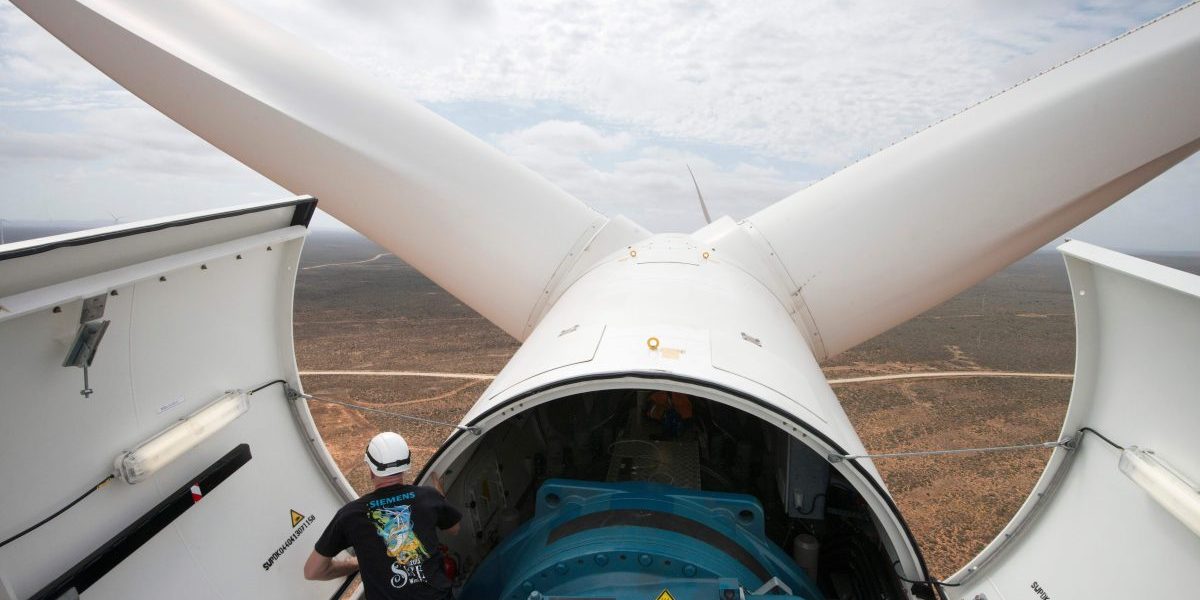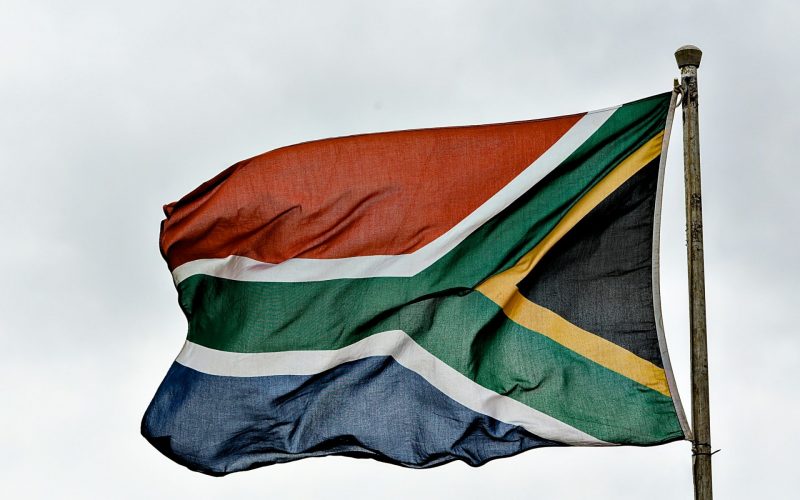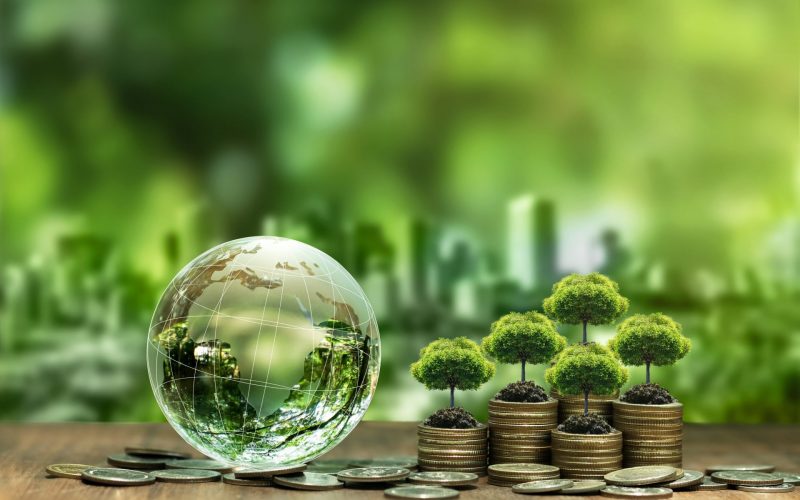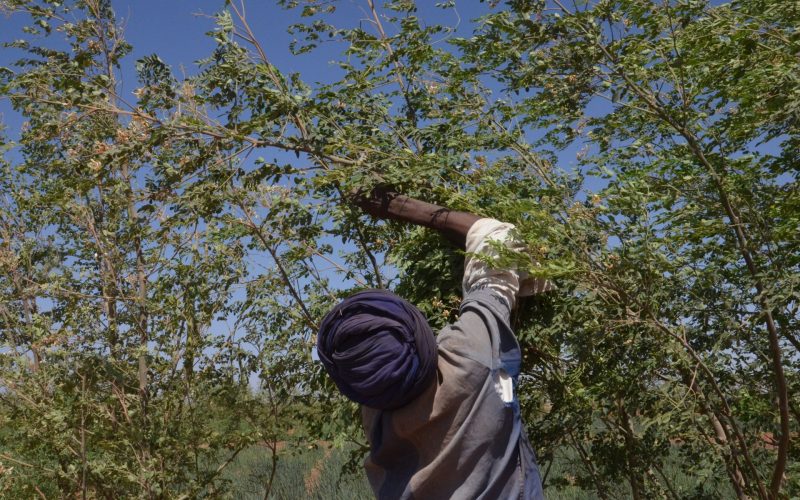Recommendations:
- National government: Domestic actors have a role to play in aligning their policy and regulatory frameworks with regional requirements. Specific interventions include: support with domestic resources (land, finance, inputs) to encourage regional infrastructure linkages, and appropriate legal measures to encourage local and foreign entries into the green sector.
- Regional Institutions (African Continental Free Trade Area Secretariat and AU): Gains and burdens from regional approach to energy transition are not expected to be shared equitably. A framework for compensating possible losers will be crucial to ensure broader support for renewable energy transition.
- EU: A shift in development assistance to encourage a regional approach in transiting to green energy in Africa is required when regional solutions prove more efficient and cost-effective.
Executive summary
This brief examines the challenges towards green energy transition in Africa and the prospect of regional integration in fast-tracking this process. Regional integration as being proposed among African countries can sidestep some of the constraints that countries, individually, face in the areas of finance, human capital and technology needed for transition. The study also reflects on the proposed Africa-Europe partnership as an important tool to strengthen this effort with support for regional integration and access to finance and innovations needed for green energy adoption.
Introduction
Green energy is derived from renewable sources and therefore contributes to economic development with minimal negative effect on the environment. Energy production from non-renewable sources contributes around 60% of total global greenhouse gas emissions.1UN Development Programme, ‘Goal 7 Targets,’ The Sustainable Development Goals, https://www.undp.org/content/undp/en/home/sustainable-development-goals/goal-7-affordable-and-clean-energy/targets.html.The Paris Agreement, Agenda 2030 and its linked Sustainable Development Goals rightly set the target of substantially increasing the share of renewable energy and doubling the global rate of improvement in energy efficiency by 2030. Meeting these targets, and successfully implementing the Paris Agreement, require all countries to undertake a transition towards green energy.
For African countries, the green energy transition presents both opportunities and challenges. On the one hand, the huge energy deficits in production and access, combined with abundant renewable energy resources, can underpin a relatively rapid and encompassing shift to green energy. On the other hand, challenges related to access to finance, investment risk and the absence of needed technical and human capacities may impede this transition. In this briefing, we review the challenges of a successful transition to green energy and explore ways in which regional integration, as embodied in the recently adopted African Continental Free Trade Agreement (AfCFTA), could address these challenges. This analysis is then applied to the recently proposed roadmap for AfricanEuropean relations which puts transition to green energy at the front and centre. We discuss specific areas to accelerate green energy transition through the Europe-Africa partnership.
African energy deficit in numbers
According to the International Energy Agency, over 600 million people in Africa have no access to electricity and a further 900 million people cannot access clean cooking energy.2International Energy Agency (IEA), Africa Energy Outlook 2019, World Energy Outlook special report (Paris: IEA, 2019).Behind these figures, however, there is significant variation across countries. As shown in Figure 1, the percentage of the population with access to electricity is as low as 1% in South Sudan, while reaching 100% of the population in the North Africa countries of Egypt, Algeria, Libya and Tunisia. This disparity is shaped by a number of factors including state capacity, quality and effectiveness of existing policy and institutional frameworks, and the ability of countries to tap into global knowledge and resources.
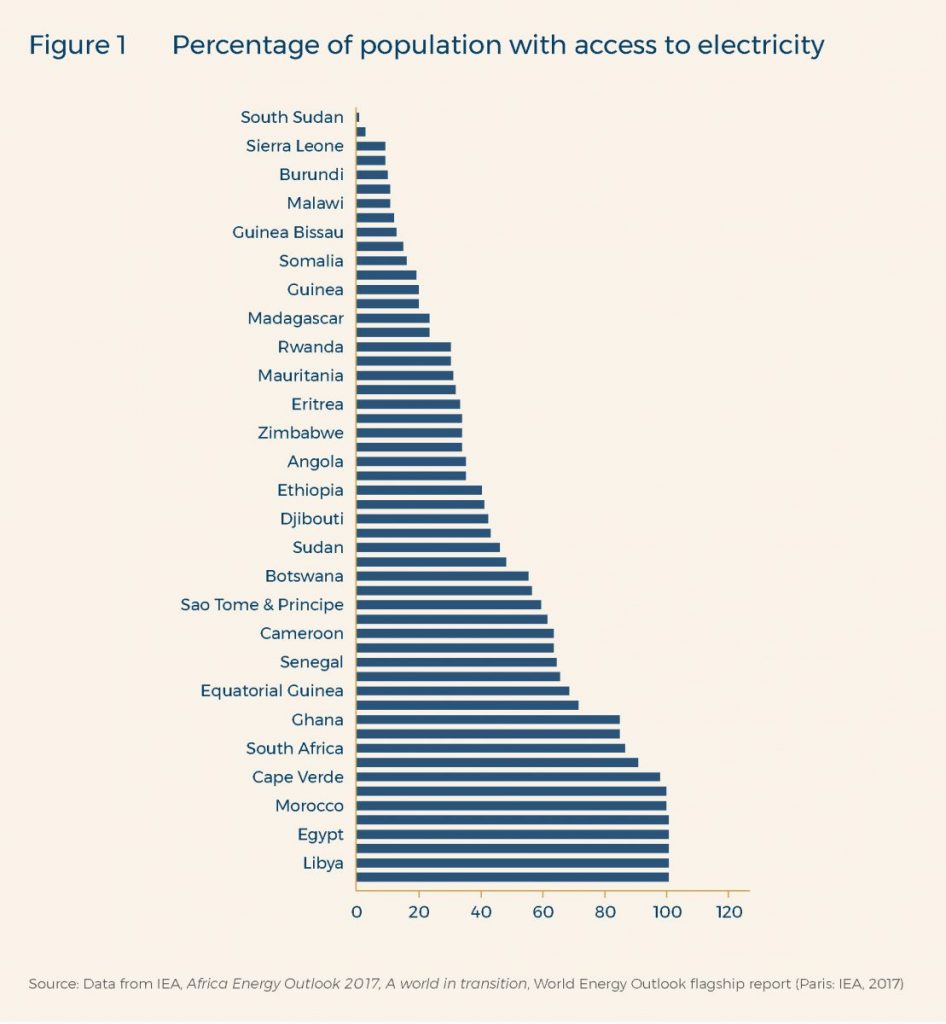
Poor energy access in Africa can be linked to low energy generating and distribution capacity. In 2018, total primary energy consumption in Africa amounted to 5367 terawatthours (TWh), compared to 7925 TWh in South and Central America, and 10446 TWh in the Middle East.3British Petroleum Company, BP statistical review of world energy (London: British Petroleum Co., 2020).Energy poverty on the continent directly contributes to other forms of poverty, for example, industrial development needed for inclusive growth is constrained by a lack of energy infrastructure. Social development indicators are also adversely impacted by the lack of access to electricity or clean cooking energy.
Constraints to green energy development
With the enormous potential for green energy, its low contribution to the African energy mix seems paradoxical. Although key national and regional plans (such as the AU’s Agenda 2063) underscore renewable energy’s importance to energy development on the continent, in many instances the enabling conditions to realise these commitments have not been developed.4Jonathan Rosen, ‘As the World Cuts Back on Coal, a Growing Appetite in Africa’, National Geographic, May 10, 2017, https://www.nationalgeographic.com/news/2017/05/lamu-island-coal-plant-kenya-africa-climate/.The slow adoption of green energy can be ascribed to many factors, including:
- Finance: According to the International Renewable Energy Agency, the transition to green energy would require an average investment of $70 billion annually over 15 years.
Human and technical capacity: The human and technical requirements of green energy production ranges from highly skilled, technical elements (research and development, manufacturing), to medium and low skill elements (operation and maintenance). African countries face technical and human capacity challenges across this spectrum.
Domestic policies and politics: Fossil fuels are subsidised in a number of African countries, which encourage its ongoing use. Some renewable energy sources, like hydropower, are shared resources and could be of limited use for energy generation where intense competition exists with other sectors or among countries. For example, Ethiopia’s ambition to build Africa’s largest hydroelectric power station through the Nile river is faced with alternative use of the water resources for agriculture and other purposes in Egypt.5Adeleke Ogunnoiki, ‘The Nile River Dispute: Assuaging Egypt’s Fear over the Grand Ethiopian Renaissance Dam (GERD)’ (unpublished academic paper, University of Lagos, 2020).This illustrates that to some extent, green energy development requires cross-country coordination and regional development planning to be effective.
Beyond the nation-state: The role of regional and international cooperation in green energy transition
Individually, most African countries lack financial, technical and human capacities needed to fully implement a green energy transition. This indicates an important role for some collaboration, both between African countries and with external partners, to enable Africa to address its energy deficit.
While many modalities for financing African green energy transition have been highlighted in the policy discourse, two recent trends seem promising in fast tracking the transition process. First is the AfCFTA, which promises to build regional market for goods and services, with free movement of persons and investment.6AU, Agreement Establishing the African Continental Free Trade Area, Treaty Text (Addis Ababa: AU, 2018).By consolidating small, poor and fragmented African countries into one strong market, the agreement can change the dynamics in terms of access to funding, human capital and technology for the green energy sector.
The second important trend is the evolving Europe-Africa relationship, as detailed in the European Commission’s Comprehensive Strategy with Africa.7European Commission, Joint Communication to the European Parliament and the Council: Towards a comprehensive Strategy with Africa, JOIN (2020) 4 (Brussels: European Commission, 2020), https://op.europa.eu/en/publication-detail/-/publication/55817dfb-61eb-11ea-b735-01aa75ed71a1/language-en..The document proposes a new comprehensive EU strategy with Africa to be built on five pillars, of which a partnership for green energy transition comes first. The EU is already ahead of the curve in green energy development and this knowledge and technological sharing can help place African countries on a similar trajectory.
In what follows, we discuss key opportunities through which regional and European-Africa cooperation can enhance the process of transitioning towards clean and sustainable energy.
African continental free agreement and green energy transition
A regional approach to addressing the African energy deficit is not new, as regional power pools already exist, through which African countries manage power generation and distribution. As shown in Table 1, these power pools have a combined installed capacity of 33.8 gigawatts (GW), 28% of which is produced through renewable energy technologies (primarily hydropower).
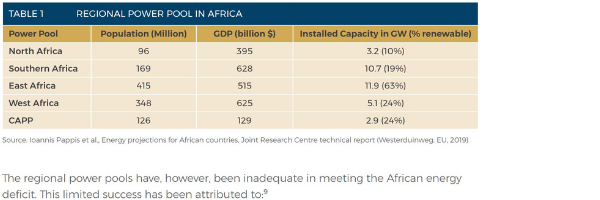
The regional power pools have, however, been inadequate in meeting the African energy deficit. This limited success has been attributed to:8Alfonso Medinilla, Bruce Byiers and Karim Karaki, “African Power Pools Regional Energy, National Power” (ECDPM Discussion Paper 244, Political Economy Dynamics of Regional Organisations in Africa, 2019).
- a deficit in investment in generating and transmitting power nationally;
- lack of trust among states and willingness to liberalise markets; and
- dominance by national power providers in national politics and the resulting preference for bilateral over regional agreements.
The AfCFTA directly and indirectly addresses these challenges, which will both improve the prospect of regional power pools succeeding, as well as greater acceleration towards green energy. First, the AfCFTA intends to scale investment in regional infrastructural projects, and given that renewable energy is a significant component of regional power pools, this can accelerate the transition to green energy. The second phase of negotiations is centred on protocols for cooperation on investment, intellectual property rights and competition policy. This protocol provides for national and continental investment as well as support for existing investment promotion agencies like the Programme for Infrastructure Development in Africa (PIDA). In addition, Annex 4 of the agreement specifically highlights seven priority sectors for trade liberation, of which energy services is included. Barriers to investment for many small and poor African countries are reduced with AfCFTA, as it enables multilateral frameworks for trade and investment negotiations.
Second, the creation of a dispute resolution mechanism as part of AfCFTA will engender trust among participating countries. This addresses the issues of mistrust that have been alluded to in the underdevelopment of regional energy power pools.9Medinilla, “African Power Pools”In addition, some of the barriers to green energy power generation and transmission that cut across national and regional boundaries are more likely to be addressed if a viable dispute resolution mechanism exists. For example, it has been argued that regional integration in West Africa is weak due to the fear of dominance of smaller countries by a large country, such as Nigeria.10Shanta Devarajan, ‘Why is Regional Integration so Elusive? Future Development,’ Brookings Institute, July 6, 2017, https://www.brookings.edu/blog/future-development/2017/07/06/why-is-regional-integration-so-elusive/.
This presents another dimension to distrust that curtails regional energy investment and integration. Again, arbitration and dispute resolution mechanisms can help in mitigating such threats and distrusts.
Third, AfCFTA is built on Agenda 2063 and is more aligned with the Paris Agreement and Agenda 2030 in terms of its focus on environmental sustainability.11African Union (AU, 2018), Agreement Establishing The African Continental Free Trade Area, 21 March 2018 (Addis Ababa)This underlines a more conducive environment for green energy transition under AfCFTA.
There are other indirect channels that AfCFTA can use to accelerate green transition. It is estimated that full elimination of tariffs among African countries will generate about $16 billion in welfare gains.12Théophile Albert, “The African Continental Free Trade Agreement: Opportunities and Challenges” (CUTS International, Geneva, 2019,Lower poverty levels and higher growth rates that will therefore result are likely to improve public and private resources for energy financing. The momentum generated in AfCFTA implementation might also galvanise action on the free movement of people and the ratification of the Protocol on Free Movement of Persons. Aside from trade liberalisation, this is another core objective of AfCFTA. In terms of the dimensions of regional integration, Africa already ranks highest on the free movement of people, largely due to existing Regional Economic Communities (RECs) (see Figure 2).
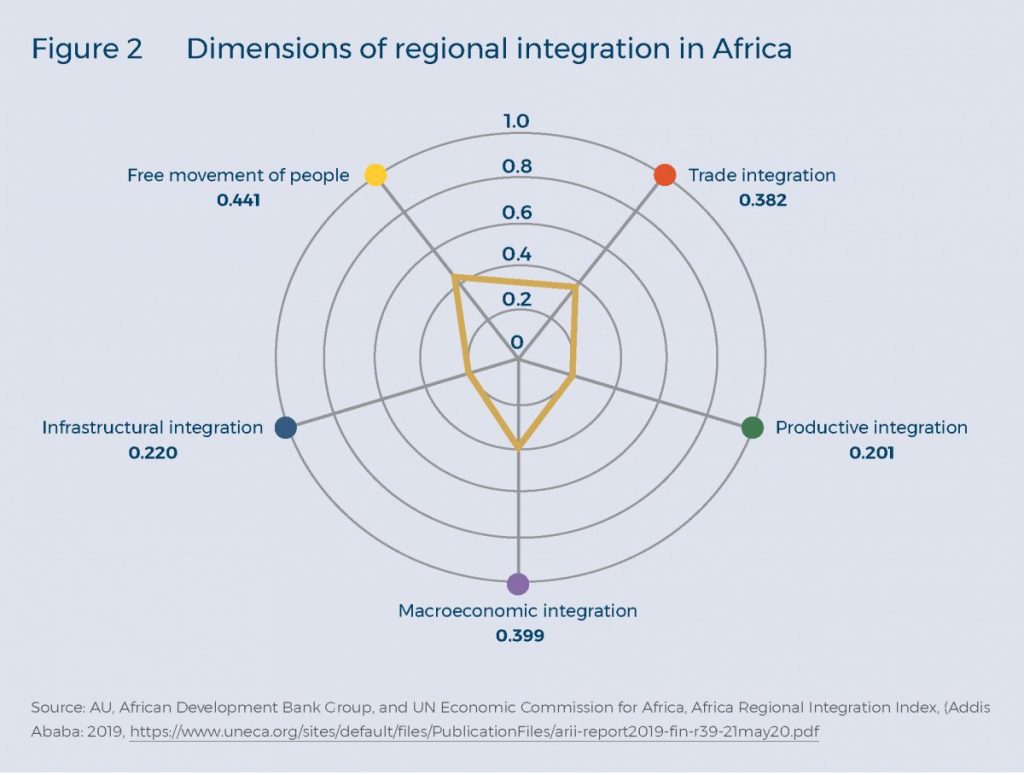
AfCFTA will, in many ways, improve on the free movement of labour as it is built on exiting RECs modalities on cross border movement. Overall, the implication of lowering the barriers to labour movement could lead to an expansion in the human and skilled labour available for green energy transition.
The increase of competition that regional integration creates could also push country’s domestic policies towards more efficient sectors and reallocate resources from unproductive activities like subsidies for fossil fuels. African countries’ end goal is a common custom union, similar to the EU. One notable trend in the EU experience is that closer economic linkages come with structures and infrastructure that align decision-making across member states – the EU Green Deal and Circular Economy Plan are examples of this regional coordination for green energy transition. The African experience is likely to follow a similar pattern given the continent’s high vulnerability to climate change and the huge potential of green energy to avert a future climatic apocalypse. Overall, green energy transition in Africa stands a better chance of being achieved with regional integration.
None of these benefits are, however, guaranteed or assured, as they depend on the successful implementation of AfCFTA, and most especially active local support. In this regard, with only 30 of the 55 African countries having ratified AfCFTA thus far, a more immediate effort is required to ensure the substantial local support for regional integration in Africa. The implication for green energy transition is that the possible momentum and support that can be gained through AfCFTA, is dependent on concerted implementation of the agreement by member countries.
New Europe-Africa partnership and the prospect of green energy transition
While the European Commission’s Comprehensive Strategy with Africa can strengthen green energy transition in Africa through existing bilateral efforts at a country-to-country level, the impact can be achieved at scale and with more efficiency if mainstreamed through regional integration. Some specific areas that the Europe-Africa partnership can deploy to accelerate African green transition are discussed below.
Special financing modality for green energy
Official development assistance from EU countries has been a major source of development finance for many African countries. At the moment, the majority of EU assistance to Africa goes into the energy sector, part of which are for renewable sources.13Organisation for Economic C-operation and Development (OECD), Development Aid at a Glance, Statistics by Region: Africa, (author to add city: OECD, 2018) https://www.oecd.org/dac/financing-sustainable-development/development-finance-data/africaDevelopment-Aid-at-a-Glance2018.pdf.However, the present modality tends to support bilateral initiatives and reality suggests the need for a shift in strategy towards balancing country-led approaches with more regional support. The various regional power pools are still besieged with financing problem14Enyo Agbodo et al., “Transforming the West African Regional Electricity Market—Lessons and Experiences” (paper, IEEE Power Africa Conference, Accra, Ghana, June 2017): 198-201., especially in terms of lack of investment in infrastructure to connect countries. This strategic shift can accelerate regional integration in many ways. This will galvanise the interest of other key donors (US and China) and the private sector in supporting or developing alternative regionalled approaches. In addition, donors have significant leverage in the policy space in Africa, and their support can mitigate some of the barriers to green energy transition created by domestic policy and politics.
Institutional knowledge sharing
The EU has become the global reference point in the areas of: transition from fossil fuels (oil and coal) to renewable energy; regional approaches to green energy transition; and policy and institutional frameworks in economic unions and regional integration. These are three crucial areas or phases that African will pass through in its quest for green energy transition. It is therefore essential that the Europe-Africa partnership prioritises this knowledge exchange. The proposed action plan for the green energy in the new agenda is particular silent on this. While elements of knowledge sharing are present in the existing bilateral and multilateral relation between EU and Africa, the AfCFTA suggests that the aspect of bilateral relations might need to be re-thought for more effective and efficient policy implementation.
In addition, the new framework is silent on the possible role for triangular cooperation in green energy transition. Trade and economic relations between African countries and regions, especially in the global south, has been on the increase over the past two decades. This in no way signals a competition in international cooperation, but rather an opportunity for the coordination of support from different actors. The Accra and Paris Agenda on aid effectiveness particularly underscore the need for the coordination of assistance. In essence, Europe-Africa partnership needs to be framed in light of emerging architecture in global cooperation, in which a role for triangular cooperation is also vital.
Technology and innovation sharing
Access to green technologies is arguably the most crucial element in the green energy transition. Indeed, this is emphasised in the Europe-Africa partnership with objective of ‘strengthening scientific capacities in Africa by providing access and local adaptation to technologies’. So far, African countries rely on imported technologies and expatriates for the development of its green sector. A concern around this is that the type of green energy that is suitable for the EU or other regions might not be the most suitable for Africa. An example of this is already evident in the fact that solar energy, of which Africa is most endowed with, is also the least developed green energy source. Given this concern, the end goal of the Europe-Africa partnership should be a transition not only in green energy, but also in African countries capacity to create, innovate and adapt green technologies to their local needs.
Acknowledgement
This policy briefing has been published as part of a series under the project Partnership for a Green Transition and Energy Access: Strategic priorities for Africa and Europe. The project is a partnership between SAIIA and the Konrad Adenauer Stiftung’s Regional Programme on Energy Security and Climate Change in Sub-Saharan Africa.

